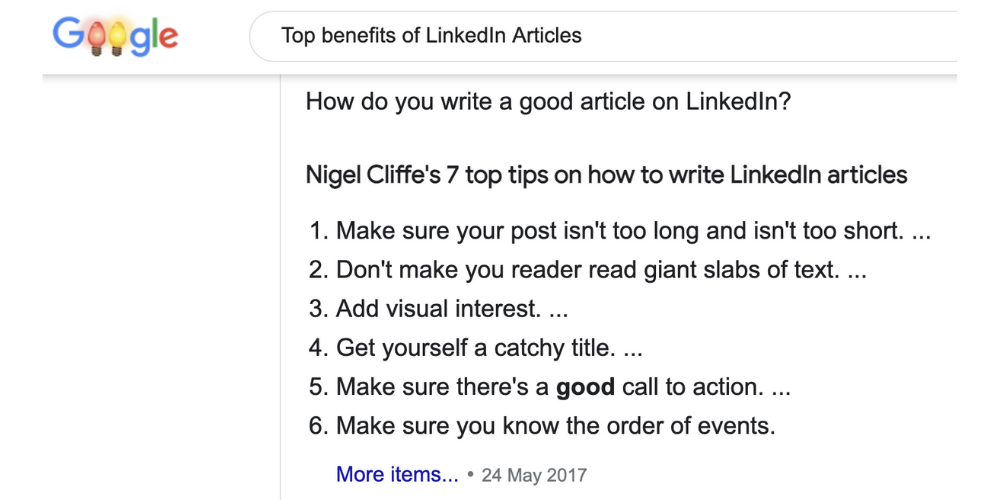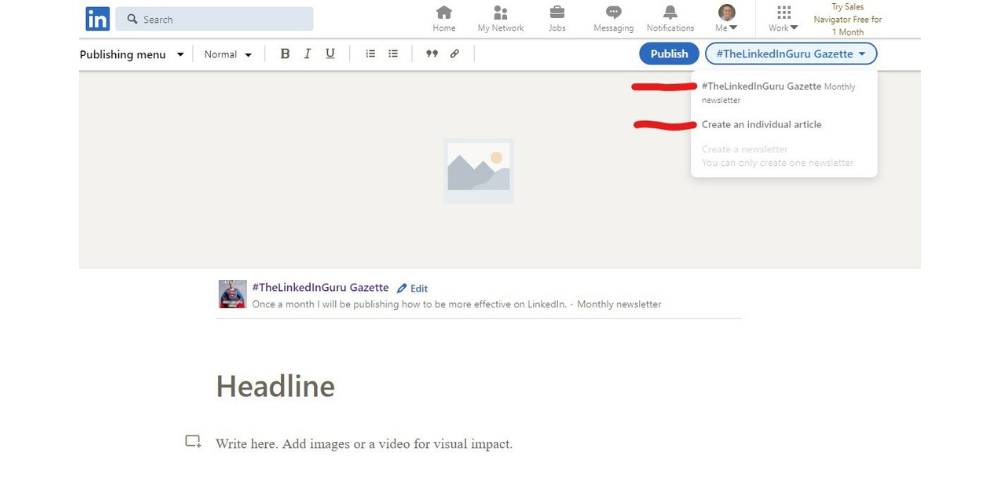Published March 16, 2022
Read Time
(Jeff Young, my special guest, adds an important item too!)
Back in March 2018 I wrote an article you can still find on my LinkedIn feed about why I don’t write a lot of LinkedIn articles anymore.
In this (old) article, I explain why I chose NOT to write many articles on LinkedIn.
Since then, I have reflected on this article as a consequence of my LinkedIn Training program, in which this question is often asked:
Things have changed a lot on LinkedIn recently, and I have changed my mind and opinion about the importance of publishing article on the platform. So, here’s why…
(for those of you short on time…)
But let’s delve a little deeper into these statements…
Done well, a LinkedIn post establishes your regular presence on LinkedIn. People who enjoy and benefit from your shared content can interact with you and your audience, creating valuable conversations and insights that can lead to new opportunities. You can also tag other LinkedIn users that you think are relevant to the subject at hand, providing more information to your audience while also prompting those relevant users to engage and share your content themselves.
The regularity of posting can often be a topic of a deeper conversation, but I find two posts a week is sufficient for me to remain active and present on LinkedIn. It also gives me the time to engage with my own and other people’s content – a very important factor which leads to success on LinkedIn.
However, there are downsides to a post:
On the upside, posts do have the opportunity to be distributed as text-only or text with an image, document or video. This means you can mix and match your content, which I also recommend.
A LinkedIn article, on the other hand, does not engage your audience nearly as much as a post. You can’t tag other LinkedIn users, and LinkedIn’s algorithm favours posts over articles in the news feed. In my experience, articles are ten times LESS likely to attract the number of views that a post does. Given that they may well take ten times as long to write, a ratio of one to a hundred doesn’t seem like a good return on your time, does it?
If you want to be considered an expert in your field, you have to demonstrate a certain depth to your knowledge. Only creating short, bite-sized content will not do this for you. Adding some weight to an argument, as demonstrated in this article, is why it becomes necessary to write the occasional article.
That means that Google and other search engines such as Bing are able to reference article content on LinkedIn and serve it through a Google search – great news! Some of my LinkedIn posts, for example, have become the default search engine result on both Google and Bing.
Whilst writing this article, I found this content of mine coming up on page 1 of Google, even though it’s from 2017! Somewhat ironic really, as for two years I had suggested NOT writing LinkedIn articles much at all!

While LinkedIn posts have a 3,000-character limit, article content can have up to 125,000 characters! I’m not sure I’d ever suggest using that many characters on LinkedIn – maybe turn it into a book instead! – but there’s a lot of room in between.
Multiple text sizes, bold text, italics, etc. Plus, you can add multiple rich-media options such as external links, images and graphics, altogether giving your content much greater visual appeal.
Yes, the numbers are much lower, but the proportion of people interacting with your content is much higher. I might typically expect an engagement rate of 3-5% on my posts but can achieve 20-30% on my articles. Not a bad return, eh?
Okay, you spotted it, my cop-out of the use of the word ‘occasional’. To be honest, I don’t know the right frequency, but I’ve recently felt the need to produce more articles, so perhaps one per month might be a starting point to consider?
But I’m also careful with my time, knowledge and experience. I’d like to spend it where it has the greatest return. So, the bulk of my time will still be spent producing and engaging in posted content where I still think I have the greatest return.
But there is more to this than initially meets the eye.
This is a relatively new feature on LinkedIn that has been rolling out for some time, and I think it’s fantastic!
 In 2020, I asked my good friend Jeff Young for his opinion of LinkedIn Newsletters. Jeff, over to you!
In 2020, I asked my good friend Jeff Young for his opinion of LinkedIn Newsletters. Jeff, over to you!
A LinkedIn Newsletter is a special form of article that has special capabilities. The capabilities are not related to formatting, but to reach and traction.
My ears picked up at ‘reach’. That’s what we all strive for – a greater audience reach…
LinkedIn originally only offered this to certain people by invitation. They say that now they are rolling it out to all LinkedIn members.
‘LinkedIn, when oh, when?’ I ask.
The major difference in a Newsletter is:
Wow, that really is amazing. Being able to guarantee that ALL my subscribers get to see my content – I’ve wanted that since having a LinkedIn account!
I discovered this feature at the beginning of August of 2020. If you want to check to see if you have it yet, all you have to do is click on “Write an article” at the top of your home page feed under “Start a post”. If it is available, it will ask you to set the parameters (frequency, name, logo, etc.) of your newsletter.

LinkedIn told me when I enquired that they would send me an email, but Jeff isn’t the first person to tell me they only realised they had this feature by chance, so it’s worth checking out Jeff’s suggestion regularly as you may have it and not know!
Newsletters have given me another channel to establish and build my brand. It has breathed life into my new and even my old “articles”. It has greatly increased my reach by allowing me to build a following of subscribers that is interested in what I publish. I currently have nearly 12,500 subscribers and the number continues to grow!
Jeff, that is amazing, 12,500 subscribers in a couple of months! I am in awe, my friend!
For me personally, I have found that newsletters get the highest number of views and engagement – more than any other type of post (text, text and picture(s), video and even document posts). It has become a monthly part (I choose to publish monthly) of my content strategy and plan.
We all seek higher engagement Jeff, so that sounds brilliant!
You SHOULD have it, Nigel. Your content is top drawer and having a newsletter would only increase the reach of your excellent content. I firmly hope they do roll this out to everyone who is interested because it is better than an old (long gone) feature called “Pulse”. I believe it can breathe new life into ALL articles (not just the ones published as newsletters)!
What can I say but ‘pretty please’, LinkedIn? May I have an early Christmas present?
So, in conclusion, each of us needs to work out for ourselves which form of content will work best for us. But I, for one, will be bringing LinkedIn article back much more into my strategy in 2021 and I can’t wait to have LinkedIn Newsletters!
On how I can help you turn your Linkedin profile into multiple opportunities in a few hours.
© Copyright 2025 Value Exchange Privacy Policy Cookies Policy Website Design by Pivotal Marketing